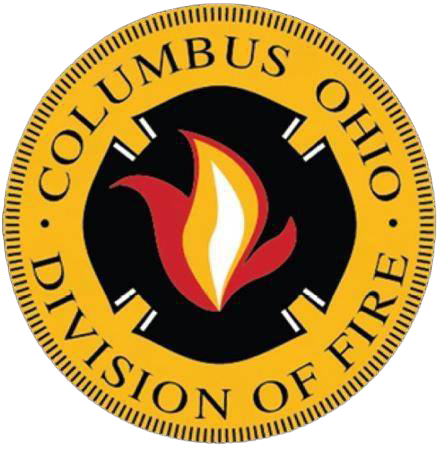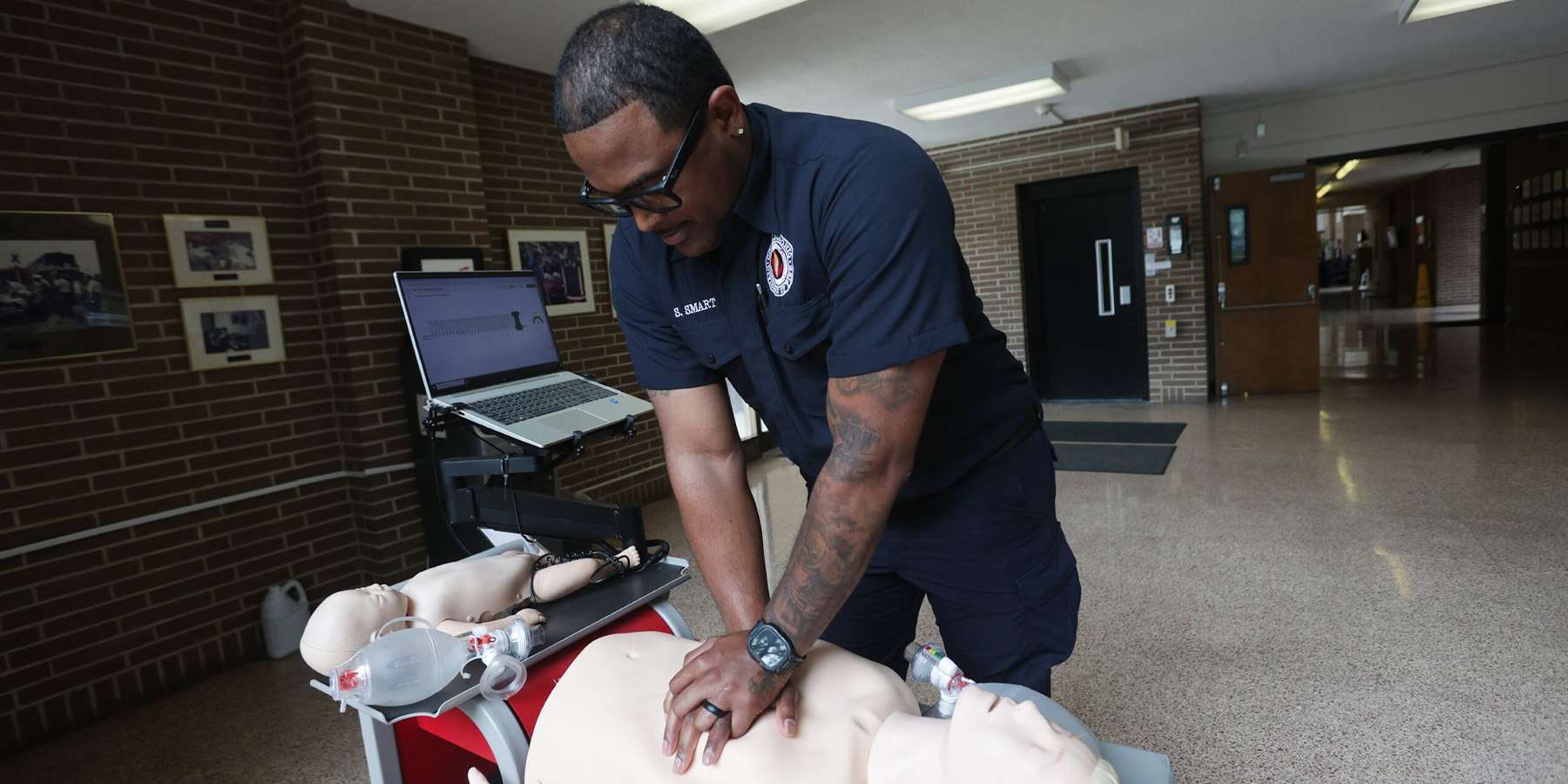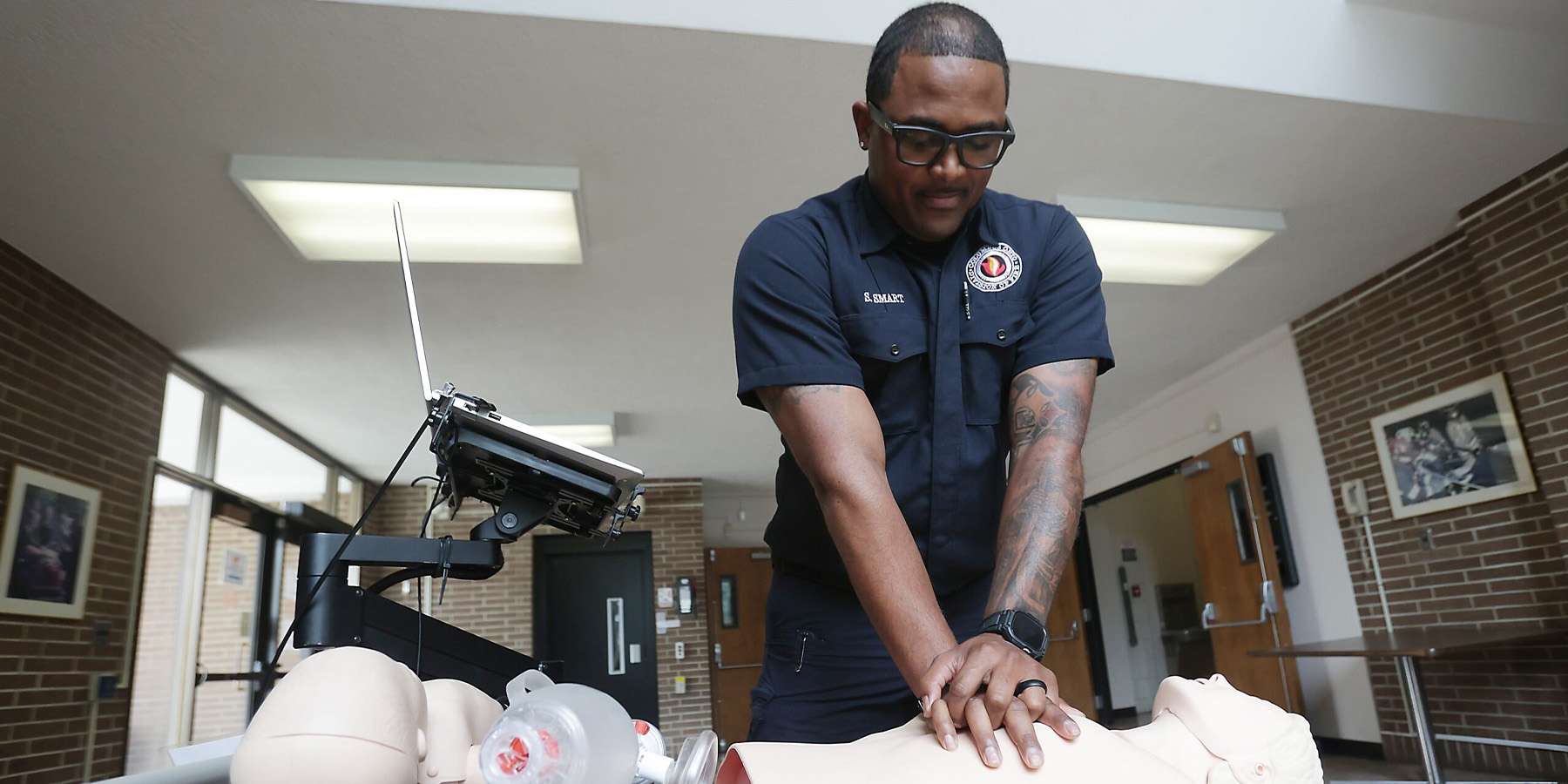Advancing CPR Training with RQI® at Columbus Division of Fire
Customer Story


The Columbus Division of Fire (CFD) is raising the bar for CPR training by equipping its firefighters with tools for high-quality CPR through the Resuscitation Quality Improvement® (RQI®) program.

The Columbus Division of Fire (CFD) is dedicated to safeguarding the community by preventing emergencies through education and inspection, minimizing injury, death, and property destruction due to fire, natural disasters, and other emergencies, while providing timely and effective emergency medical services.
Firefighter Robert Kelley, EMS Training Specialist at the Columbus Division of Fire (CFD) in Ohio, is dedicated to providing high-quality training to all the firefighters in the division.
CFD has over 1,600 firefighters – including 800 trained at the paramedic level. The department also handles bomb response, K-9, hazmat, and heavy rescue training for central Ohio.
“There’s a lot of training that needs to happen to maintain those certifications,” explains Firefighter Kelley. “So what we were looking [for] was to get some of our training dates cleared off the calendar.”
“BLS, ACLS, and PALS…for that amount of people every two years, was really a ‘time vampire’ on our schedules,” he adds. “So we were looking [for] a way to free that up.”
Plus, each training session created additional costs by requiring backfilled positions through overtime. “We have to be good stewards of taxpayer dollars,” he says.
“We don’t have the luxury of putting a sign in the window saying we'll be back in eight hours,” he points out. “When people call 911, they expect people to be there. So we were backfilling over half of the members that we were bringing down for class.”

To address the need to increase efficiency in training, Firefighter Kelley and his team decided to try Resuscitation Quality Improvement (RQI®): an innovative program developed by the American Heart Association in collaboration with Laerdal Medical.
RQI’s features include:
With minimal reliance on instructor presence, RQI would allow firefighters the flexibility to seamlessly integrate training into their schedules without disrupting their duties.
Firefighter Kelley started with eight RQI carts. Each cart contained adult and infant manikins, plus a laptop. They kept one at their training academy, and the rest in each of their seven battalions. Each battalion cart was rotated every two weeks so that every station would have a chance to use it.
“The carts are incredibly durable and easy to move,” he says. “We have a cargo van. We put a lift gate on the back. We simply unplug it from the one station, roll it out to the van, lift it up in there, take it to the next station, plug it in, and they’re ready to go.”

Implementing the RQI program at CFD was a resounding success. RQI not only enhanced training efficiency but also led to measurable improvements in performance.
The RQI platform provides comprehensive performance data for each learner. “We looked at the data – because data is something concrete, tangible, and something that we can show everyone,” he says. “We looked at the analytics that we got from the system, along with the CARES registry information [to help us see where we stand] not only in central Ohio, but across the nation.”
“What we found was that we were doing really good adult CPR. Our baseline entry into RQI [was] 90% for ventilations and compressions. We have since moved those up to 98% and 99%, respectively.”
Infant CPR, however, was a different story. The performance data from RQI helped them recognize that their infant CPR performance wasn’t where they wanted it to be.
Firefighter Robert Kelley
EMS Training Specialist and AHA Training Center
Coordinator, Columbus Division of Fire

“The good thing about cardiac arrest in infants is it doesn’t happen that often,” he says. “The bad thing is it doesn’t happen that often. So people don’t get comfortable dealing with infants. RQI is a great way for our folks to bridge that gap.”
Upon renewing their contract, he and his team opted for an additional eight RQI carts, allowing them to have one stationary cart in each battalion. Having the additional carts helped even more with maintaining compliance.
“RQI has improved our outcomes in cardiac arrest,” he shares. “We look at the whole picture – it’s not just one aspect of cardiac arrest resuscitation. RQI is definitely key because it took away our need to focus on and train actively on compressions and ventilations.
We could spend more training time working with defibrillation monitors – getting our crews more comfortable with that monitor, analyzing that cardiac rhythm within five seconds, and delivering that shock – because RQI was taking care of the time that we would’ve spent in the classroom with the fundamentals. It definitely contributed to the overall success and our increased survivability rate in central Ohio.”
“RQI has allowed us to deliver high-quality CPR training in a way that’s flexible, cost-effective, and repeatable. Through our engagement with this innovative learning solution, we provide our members with state-of-the-art knowledge and skill reinforcement. As a result, we’ve seen significant improvements in our ability to perform and maintain high-quality CPR for both adult and pediatric patients.”
– Firefighter Robert Kelley, EMS Training Specialist and AHA Training Center Coordinator, Columbus Division of Fire

If you’re interested in trying RQI at your organization, Firefighter Kelley provides these tips to help you succeed.
“Our finance department was really stuck on the big number, the up-front number,” he shares. To help get buy-in, he and the team went back over the last two years to look at how much they spent on overtime backfilling and bringing instructors in. This was no small feat – but it allowed them to show finance that RQI would save money.
“Yes, you’re [spending] a little bit more at a one-time period. But over the course of that two-year period, we’re actually going to save money,” he says.
“Our super-users were key,” he says. “I think you have to have a core group of individuals who understand RQI, who can then help the rest of the group join. Having that super-user group working with the firefighters … they were able to help walk them through – because change is scary.”
“If I have mastery of my compressions and ventilations, I spend 5 minutes at the cart and I’m done,” he explains. “If I have mastery of knowledge, I get through BLS, ACLS, and my PALS online learning in about 20 minutes. I spend less than 30 minutes a quarter renewing all of my certifications. It’s a reward for mastery of skills. That really resonated with our people.”